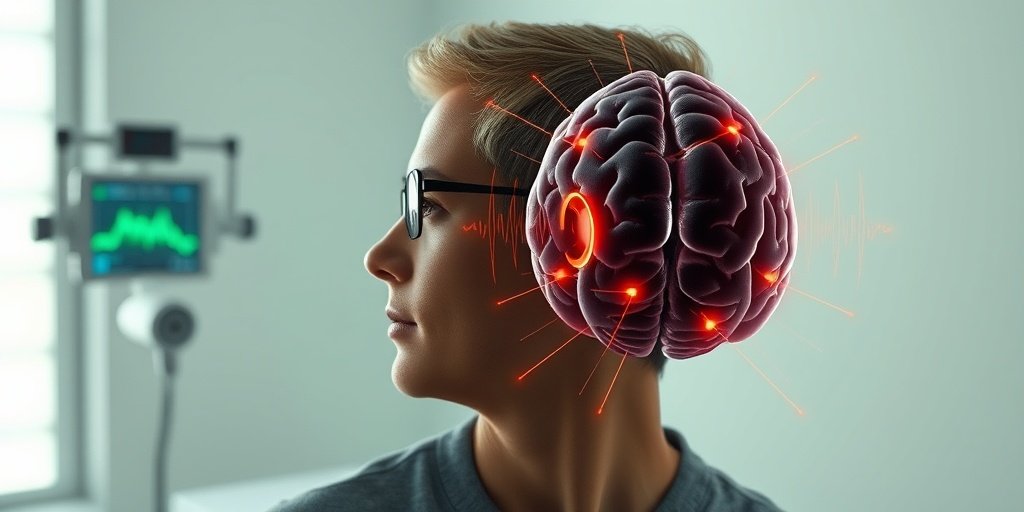⚡ Quick Summary
This study explored the neural basis of listening effort in experienced hearing aid users, utilizing functional near infrared spectroscopy (fNIRS) to assess the impact of a new deep learning-based noise management feature. The findings revealed that the new feature significantly improved listening accuracy and reduced subjective listening effort, as well as oxygenation levels in the left prefrontal cortex.
🔍 Key Details
- 👥 Participants: 26 experienced hearing aid users
- 🔊 Conditions: Standard-listening program vs. DNN-listening program
- 🧠 Technology: Functional near infrared spectroscopy (fNIRS)
- 📈 Metrics measured: Listening accuracy, subjective listening effort ratings, prefrontal oxygenation
🔑 Key Takeaways
- 🧠 fNIRS is a valuable tool for studying brain activity related to listening effort.
- 💡 The DNN-listening program led to higher listening accuracy compared to the standard program.
- 📉 Subjective listening effort ratings were significantly lower with the DNN-listening program.
- 🔬 Oxygenation levels in the left prefrontal cortex were reduced during the DNN-listening program.
- 🌟 This study highlights the potential of deep learning technologies in enhancing hearing aid performance.
- 📊 The findings suggest a direct link between advanced noise management features and cognitive load reduction.
- 🔍 Future research could further explore the interaction between listening effort and cognitive processes.

📚 Background
Understanding the listening effort in individuals with hearing loss is crucial for improving their quality of life. Traditional hearing aids often struggle in noisy environments, leading to increased cognitive load and fatigue. Recent advancements in neuroimaging techniques like fNIRS provide new insights into how innovative hearing aid features can alleviate these challenges, making it an exciting area of research.
🗒️ Study
Conducted with 26 experienced hearing aid users, this study aimed to evaluate the effectiveness of a new deep learning-based noise management feature. Participants were tested in two conditions: a standard-listening program and a DNN-listening program that utilized advanced algorithms to manage background noise. The study measured listening accuracy, subjective effort, and brain oxygenation levels using fNIRS.
📈 Results
The results were promising: the DNN-listening program resulted in higher listening accuracy and lower subjective effort ratings. Additionally, fNIRS data indicated lower oxygenation levels in the left prefrontal cortex, suggesting that the advanced noise management feature effectively reduced cognitive load during listening tasks.
🌍 Impact and Implications
The implications of this study are significant for the field of audiology. By integrating deep learning technologies into hearing aids, we can enhance user experience and reduce the cognitive burden associated with listening in challenging environments. This research paves the way for future innovations that could transform how individuals with hearing loss interact with their surroundings, ultimately improving their overall well-being.
🔮 Conclusion
This study underscores the transformative potential of deep learning in hearing aid technology. By demonstrating that advanced noise management features can improve listening accuracy and reduce cognitive load, we are moving closer to creating hearing aids that not only amplify sound but also enhance the listening experience. Continued research in this area is essential for further advancements in auditory health.
💬 Your comments
What are your thoughts on the integration of deep learning in hearing aids? We would love to hear your insights! 💬 Leave your comments below or connect with us on social media:
Brain benefits of deep learning-based noise management in experienced hearing aid users using functional near infrared spectroscopy.
Abstract
There is growing interest in using neuroimaging to understanding listening effort in individuals with hearing loss, with a particular focus on how innovative hearing aid features impact listening effort. This study used functional near infrared spectroscopy (fNIRS) to investigate the neural basis of listening effort in experienced hearing aid users. This study evaluated the impact of a new deep learning-based noise management hearing aid feature on cerebral blood oxygenation, with the expectation that it would be associated with less oxygenation in the left prefrontal cortex compared to a standard quiet-listening hearing aid program. Twenty-six experienced hearing aid users repeated sentence-final words from sentences presented in noise while wearing individually prescribed hearing aids in two conditions: a standard-listening program with an omnidirectional microphone setting and a DNN-listening program combining directional microphones with a deep-neural-network-based noise management algorithm. Listening accuracy, subjective listening effort ratings, and prefrontal oxygenation via fNIRS were measured throughout testing. As expected, the DNN-listening program was associated with higher listening accuracy, lower subjective listening effort ratings, and lower fNIRS-measured oxygenation in the left prefrontal cortex relative to the standard-listening program. The utility of fNIRS for hearing aid research and the interaction of listening effort and other cognitive processes are discussed further.
Author: [‘Vaisberg JM’, ‘Dang C’, ‘Jiang Y’, ‘Qian J’, ‘Russo FA’]
Journal: Sci Rep
Citation: Vaisberg JM, et al. Brain benefits of deep learning-based noise management in experienced hearing aid users using functional near infrared spectroscopy. Brain benefits of deep learning-based noise management in experienced hearing aid users using functional near infrared spectroscopy. 2025; 15:41815. doi: 10.1038/s41598-025-25801-y